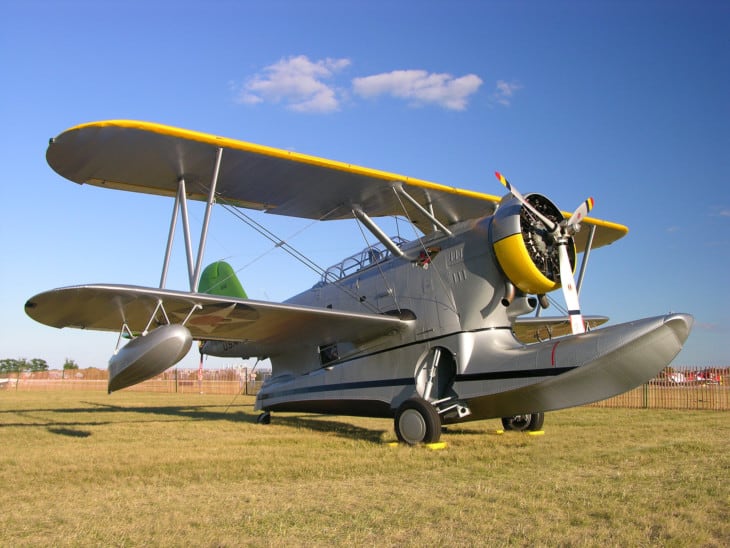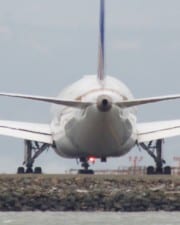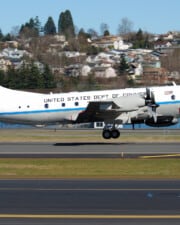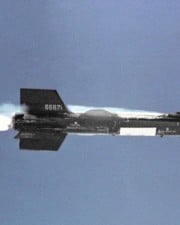While sleek and elegant aircraft often steal the spotlight, there’s something captivating about the unconventional and, yes, the ugliest aircraft ever to grace the skies. Aircraft design is arguably just as much art as it is science. Like a beautiful painting or sculpture, aircraft designs can be absolutely breathtaking or one of the strangest or most ugly things you’ve ever seen.
Of course, beauty is in the eye of the beholder (or so the old saying goes). What one avgeek thinks is a beautiful or ugly aircraft, another could completely disagree. But these 12 aircraft are without a shadow of a doubt, uglier than most.
Their inclusion in this article is in no way indicative of their service histories. Some of these ugly aircraft have had extremely successful service histories in spite of their ugliness, whilst yes, others have failed. So without further ado, these are the 12 ugliest aircraft ever built.
Related: 12 Worst Military Aircraft Ever Built
1. Boeing X-32
More info: Boeing X-32
The aircraft that ultimately lost the Joint Strike Fighter program to the Lockheed Martin F-35 Lightning, the Boeing X-32 is a pretty ugly design.
Like the F-35 that beat it, the X-32 was designed to be stealthy. This meant its final design incorporated a lot of rather ugly-looking straight lines that seem to be trying (and failing) to form triangles, from the wing to the rudder to the engine intake.
A main reason for the X-32’s ugliness is its engine intake. Its position under the cockpit, combined with the triangular straight lines makes everything look rather out of place.
Plus, it probably doesn’t help that looking at it from the front of the aircraft, the intake vaguely resembles a pelican’s beak or Star Wars character Boss Nass’s laughing smile. Neither are things you’d think of for what Boeing intended to be the West’s main frontline fighter.
2. British Aerospace Nimrod AEW3
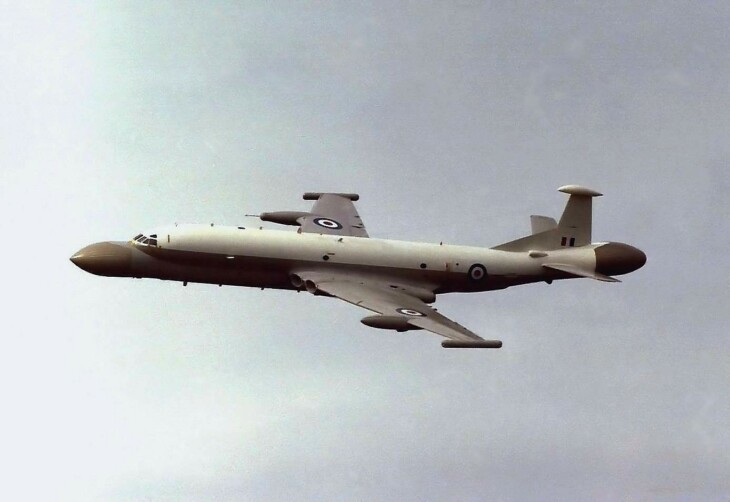
Lists like these are often chock full of British designs. And while Britain has produced its fair share of ugly, scary and down right ridiculous designs, perhaps none are as horrendous as the Nimrod AEW3.
The Hawker Siddeley Nimrod – from which the Nimrod AEW3 is derived – may not have been the most beautiful aircraft ever built, but it was certainly practical. After all, they were used from the mid-1960s until 2011.
But the Nimrod AEW3 was neither. Far more hideous than its predecessor on account of those huge radar arrays slapped haphazardly to the nose and tail (which surely didn’t help the Nimrod’s already poor aerodynamics), the Nimrod AEW3 was also completely useless.
Indeed, the radars at the front and rear of the aircraft made it almost impossible to accurately detect incoming aircraft while simultaneously making it look like quite possibly the worst aircraft on this list.
Thankfully, the RAF never ended up using these monstrosities and ended up purchasing a fleet of much more accurate, and more importantly, sleeker American-built Boeing E-3D Sentries.
3. EL/W-2085 Eitan
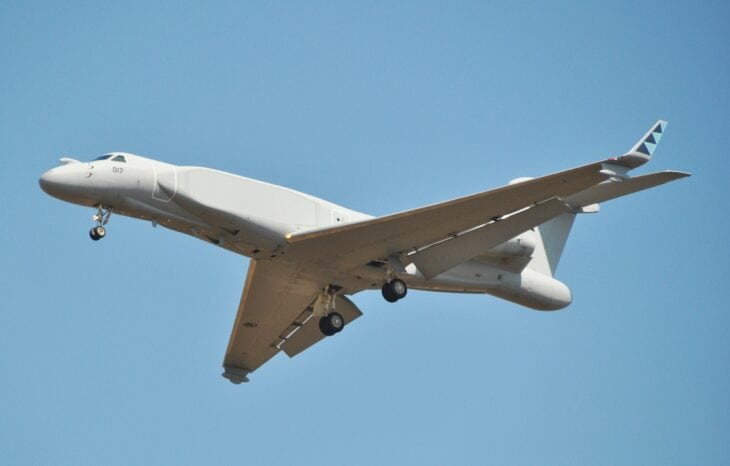
Yet another AEW&C aircraft, the IAI EL/W-2085 is similarly one of the ugliest aircraft ever built.
Built on the basis of the Gulfstream G550, arguably one of the sleekest private jets, when IAI made their extensive modifications to both the interior and exterior of the aircraft, they seemingly chose to remove all the sleekness of the base aircraft.
Where the G550 has a thin, almost slender fuselage, the EL/W-2085 looks as though it is a flying oblong.
Even the famed Gulfstream nose cone was not safe, with it being entirely replaced with one that houses a radar array. But to fit such an array, the new nose cone has a quite noticeable droop, making it look like a poor man’s imitation of a Concorde.
4. Aero Spacelines Pregnant Guppy
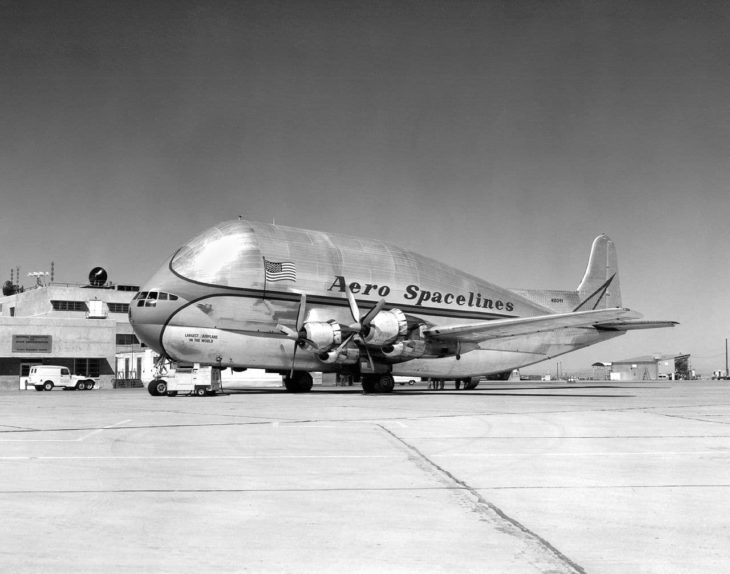
The transportation of aircraft parts had always been a problem. Many parts were too large to be transported by land or in cargo aircraft. Helicopters lacked the range and were expensive to operate, leaving ships as the only option.
But ships were slow, and in the context of the Cold War, where technology advances happened rapidly, the engineers at Aero Spacelines had an idea: Take an already big cargo aircraft and make it even bigger so it can carry aircraft and spacecraft parts quicker and more affordably.
So that’s what they did with a bunch of aging Boeing C-97 freighters (the freighter variant of the Boeing 377 Stratocruiser airliner).
Already a huge aircraft, Aero Spacelines added a new upper fuselage and literally cut the tail section off to allow for full rear loading. This new design was christened the “Pregnant Guppy” as its tri-bubble appearance resembled that of the pregnant fish.
Aside from looking unflattering in almost every photo ever taken of it, and indeed in real life too, the Pregnant Guppy, along with its larger successor, the Super Guppy, looks like what would happen if a plane mated with a blimp.
5. Northrop Tacit Blue
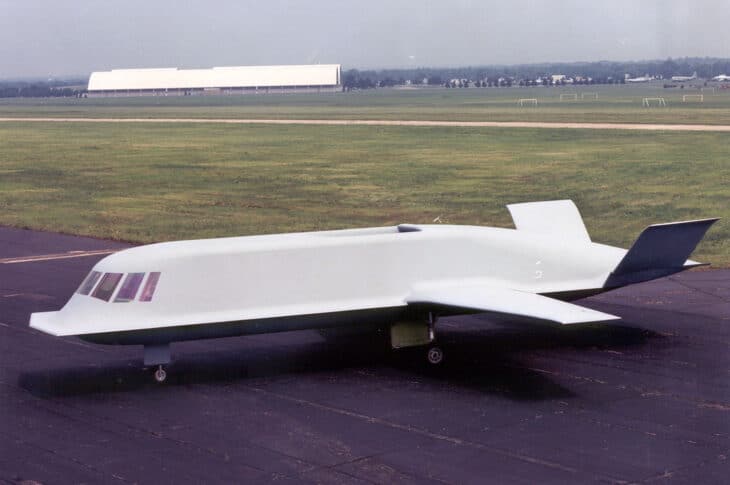
Described by Northrop’s chief engineer as “the most unstable aircraft ever designed” the Northrop Tacit Blue was designed for use as a stealth testbed and technology demonstrator.
Its unique fuselage shape, combined with its never-before-seen use of flat edges and surfaces earned it a slew of nicknames. This includes “the whale” to the “alien school bus” to my personal favorite and the one used by the Northrop test pilot who flew it, “the filing cabinet”.
Indeed, it looks like a duck-billed platypus with wings.
But unlike many of the other ugly aircraft on this list, the Tacit Blue was actually quite a good stealth demonstrator, as Northrop ended up winning the contract. Probably because radars refused to detect this crime against aircraft design.
6. Ilyushin Il-40
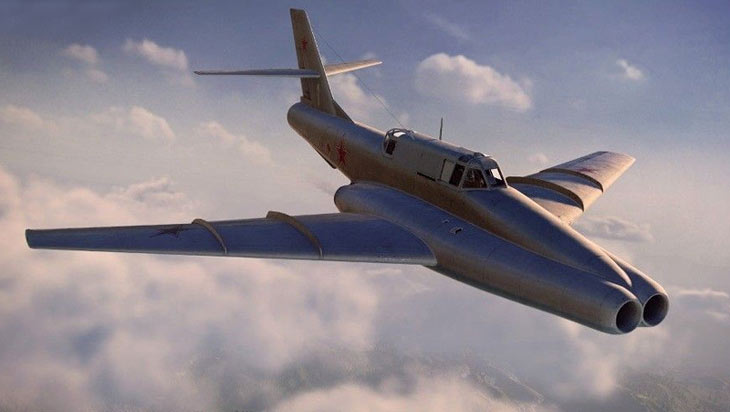
Among the first jet-powered ground attack aircraft ever built by the Soviets, the Il-40 was everything botched Russian aircraft are famous for: scaring the West like nothing else, failing spectacularly and being really ugly.
While aircraft from the early jet era are nowhere near as stylish as they are now, the Il-40 was even considered ugly by contemporary standards, primarily on account of those two huge air intakes at the nose.
Rather than blend them into the nose as was done on the contemporary MiG-15, MiG-17 and North American F-86 Sabre, Ilyushin left them exposed making it look like a flying double barreled shotgun!
Ironically, it was the sound of a double barreled shotgun going off that the Il-40 made when it blew up, broke down or otherwise failed to fly.
7. Edgley Optica
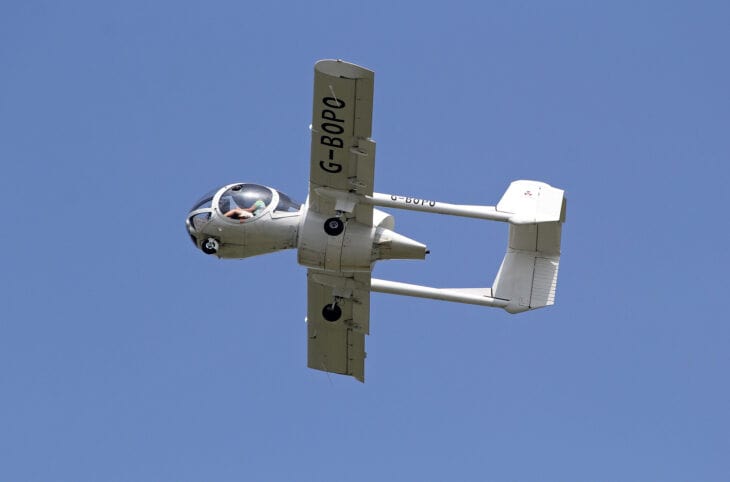
In the aviation community, it’s sometimes joked that British aircraft are either as ugly or as elegant as possible. The Edgley Optica was most definitely an example of the former.
Built as an observation aircraft to replace helicopters, the Optica prioritized slow speeds and visibility above all else.
This laser-edged focus on visibility meant the Optica has a cockpit that looks like it was stolen straight off a helicopter. Whilst it looks fine on a helicopter, on the front of a fixed wing aircraft, this cockpit looks kind of like a bug’s head.
Coupled with the air intake being immediately behind the cockpit and those incredibly high and straight wings, makes the Edgley Optica look like the strangest dragonfly I’ve ever seen!
8. Messerschmitt Me P1109
Throughout the history of aviation, there have been hundreds of wing designs. Aircraft have had straight wings, swept wings, and even multiple wings. But the P1109’s wing design is perhaps the strangest.
Built towards the end of WWII, when Wunderwaffe – or “Wonder weapons” – were at the heart of the German war machine, the P1109 was designed to show Nazi Germany’s engineering might to win the war.
But the Me P1109’s rather unique wing design makes it look as though someone wondered what would happen if you tried to use two pairs of scissors as airplane wings.
Fortunately, the Me P1109 never made it past the design phase as the war ended before a prototype could be completed. Sadly, Allied engineers thought this was too wacky of a design to even consider reverse engineering!
9. Bleriot 125
As one of the pioneers of early airliner technology, Bleriot was responsible for a number of wacky aircraft designs. None perhaps embody this as well as the Bleriot 125.
Built completely out of wood, the Bleriot 125 was designed to fly 12 passengers in two pods mounted under the wings.
Despite looking like two whales under a wing, the Bleriot 125 was not amphibious. Moreover, the two whale-like pods gave it some of the worst handling of any aircraft Bleriot ever built.
Furthermore, the cockpit and air intake, located in between the two pods, looks like the front of a Stipa Caproni but French, and looking even more out of place than that of the Caproni because of that huge propeller.
Viewing it from the rear, there is yet another propeller (this time a pusher) which looks equally as out of place as the one on the front, and the tail looks as if the designer got a little trigger happy when it came to rudders. After all, there are four of them!
10. Grumman JF Duck
More info: Grumman J2F Duck
Though it may seem weird to us now, there was once a time when amphibious aircraft were all the rage.
Back then, the most common trend was for the main fuselage – where the passengers, cargo or whatever was being flown was – to act as a sort of boat hull, allowing the aircraft to maneuver on water when not in the air.
With the JF Duck, however, Grumman seems to have simply stuck a boat hull to the bottom of a perfectly good biplane. It almost looks like this was a last minute addition or a hastily jerry rigged solution, but this design was used from the start!
What’s worse is that both the JF Duck, and its slightly modified successor, the J2F Duck, were actually quite popular, remaining in service with the US military from the early 1930s to well into the 1950s!
11. Britten-Norman Trislander
Among the smallest airliner manufacturers in the world, Britten Norman has been producing the BN-2 Islander continuously since 1965. The Islander has proven to be so popular that back in 1970, Britten-Norman went about developing it into a far bigger, and hopefully more popular, successor.
What resulted was the Trislander. A veritable failure with only 80 produced over a 12 year production run (compared to nearly 1300 for the Islander), the Trislander is also a rather ugly design.
Measuring in at 49 ft 3 in (15.01 m) long, the Trislander is a mere 3 ft 6 in (1.09 m) wide, which make it look like a flying pencil when you take into account its rather pointed nose cone.
A tri-propeller design, the Trislander fails to have that “cool” factor by simply looking like a toddler’s poor attempt at drawing a Tristar.
Furthermore, the Trislander is generally used by small, independent, regional airlines, who need bright, bold paint schemes to stand out. These garish paint schemes tend to just accentuate the overall ugliness of the Trislander.
12. Gloster Meteor F8 “Prone Pilot”
The Gloster Meteor is chiefly known for being the only Allied jet aircraft to see combat during WWII. Indeed, it is a marvel of its time, and one that was praised in its time for having one of the sleekest designs of any aircraft built up to that point.
But then, a little over a decade after it first flew, the engineers at the Bristol Aeroplane Company (who by now owned the remnants of Gloster) decided it would be a good idea to modify a Meteor so the pilot was laid down in the prone position.
What resulted was an aircraft that looks like a regular Meteor with the nose cone of a V2 rocket bolted to the front. Thankfully, only one of these monstrosities was ever built as the cost of developing g suits were found to be much lower and more comfortable for the pilot!
Related Posts

























